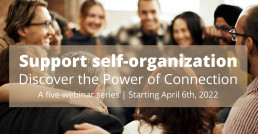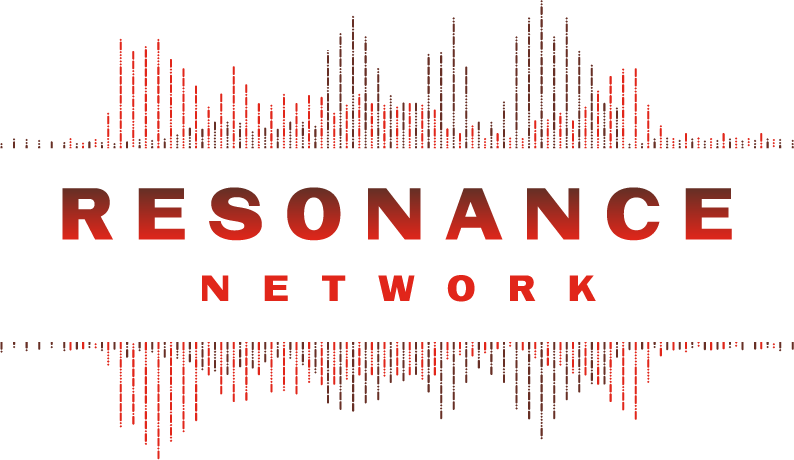Bridge the Gap between Vision and Reality: a webinar offering
It’s a joy when self-organization works well. It’s a drag when it doesn’t. The gap between how it can be - or should be - and what it is can sometimes be too big. That’s especially true when individual team members lack flexibility and self-reflection, when decision making by the team is driven by hidden power games and not-so-hidden rigid and defensive behaviour, and when there is a lack of openness. These create frustration, distance, demotivation, powerlessness, and other symptoms indicating that collaboration is not as effective and joyful as it can be. It reduces the quality of work.
Experts show you a piece of the puzzle of what self-organization can be like. Most of them offer an inspiring glimpse of what is possible. But when the gap between their vision and your day-to-day reality is too big, you might get frustrated. You may even doubt your capability to make self-organization work well within your team or organization. Vision without a direction is like hearing someone speak about Paradise, without showing you how to get there and providing tools to accelerate your journey. So, how do you get there?
- Declaration of Responsibility
The first step you all take is to sign the declaration of responsibility. You declare that you are willing to take full responsibility for yourself, the team (the collaboration), and the quality of the service or product that your organization provides. You never relinquish that responsibility.
- Responsibility for yourself
To take full responsibility for yourself, you need self-awareness. You need to know who you are and what drives you, the purpose in your life, and you need a healthy mind-body balance to convert the signals your senses give you into actions that allow you to take good care of yourself and others.
- Responsibility for your team (collaboration)
To take full responsibility for your team, you need insight into the invisible forces that influence everything you do. Compare it to the operating system of your computer or tablet. If that doesn't work, no software will work well, and you won't achieve the desired outcome. The Periodic Table of Radical Respinsibility is a learning tool to help you build a solid operating system.
- Responsibility for the output
To take full responsibility for the quality of what you as a team deliver, you need an instrument to 'measure' the level of trust in your team or organization. After all, trust determines what you can achieve. A profound tool for measuring the state of trust in four dimensions is the Power of Connection model (image). You can use it both as a reflection and feedback tool.
For over 30 years, Norbert Netten, founder of The Power of Connection method, has worked with teams to provide insights and tools they need to strengthen their collaboration. Norbert is a strong advocate for self-organization. When it works well, it supports people to take responsibility for themselves, the team, and the quality of their work, without compromising on any of those factors, which is what usually happens.
Webinar series
Norbert Netten, founder of the Power of Connection, is organizing a webinar series on how to bridge the gap between vision and reality. In five webinars, starting April 6th, you will explore the Declaration of Responsibility and Transactional Analysis. You will also learn to use the Periodic Table of Radical Responsibility learning tool and the Power of Connection model reflection tool to bridge the gap between vision and reality. This is a great opportunity to reflect on the quality of collaboration within your team or organization. And when you do recognize a gap, you can immediately start closing it and use your power to reach your goals.

Full details and subscription HERE
The code for 15% discount for Network Weaver subscribers: NWSS22-1 (Capitals!)
* This webinar announcement is published as an extension of Network Weaver's Community Space. We offer space for sharing on this platform, and invite you to use information shared here as it serves you.
The illusion of hopelessness
The war in Ukraine is a symptom of something bigger— and within reach
In times of war, we are led to believe we are powerless.
We are told that violence is inevitable, an unfortunate part of the way things are. And that the way things are cannot change.
As world events have transpired over the last two weeks, this illusion has begun to splinter
* * *
Russian military forces invaded a sovereign nation on February 24th. Within days, the United States, the European Union, and other nations announced a series of economic sanctions on Russia. At the same time, countries of the European Union waived visa rules for Ukrainian refugees–allowing those fleeing war to enter the EU without having to seek asylum.
Homes across Europe have opened their doors to Ukrainians fleeing war, and President Biden announced that Ukrainian refugees would be welcome in the US “with open arms.”
These moves were swift and unprecedented. Rules that had long existed were replaced with new ones. Systems changed as people and countries moved together in response to a humanitarian crisis.
How quickly rules can change when we want them to.
How malleable systems can be when we agree on what is right.
* * *
Russia’s attack on Ukraine, like all wars, is a symptom of a worldview of domination and extraction.
Like all wars, it exists amid other symptoms and consequences of this worldview: modern dependence on oil and the interests of the fossil fuel industry; unmistakable racism at the Ukrainian border as Africans were systematically turned away.
And the global coordination to condemn Russia’s attack and support the Ukrainian people was made possible, in part, by white supremacy: Western sensibilities were stirred by seeing white refugees. Meanwhile, escalating humanitarian crises in Afghanistan, Palestine, Yemen, Syria, Somalia, and Ethiopia have not been met with the same swiftness.
Imagine a world where all people in need were met with dignity and humanity. Where violence and harm was met with resounding care.
Imagine systems of governance that hold these values above all others.
* * *
In times of war, we are led to believe we are powerless by those who benefit from our silence. We are led to believe our collective systems cannot change by those who benefit from the way things are. Meanwhile, worldviews of domination and extraction continue to shape our reality and perpetuate harm.
As the war in Ukraine has unfolded, we’ve also seen a wave of dehumanizing legislation against queer and trans young people, increasing threats to reproductive justice, and an alarming epidemic of homelessness continuing in the US, all while COVID cases spike in Europe and Asia.
When we understand that all violence is a symptom with the same cause, we can also see that we are not just spectators to what is happening — in Ukraine or right beside us.
There is hope, and the hope is us.
* * *
“There is never time in the future in which we will work out our salvation.
The challenge is in the moment; the time is always now.”
~James Baldwin
Resonance Network is a national network of people building a world beyond violence.
Originally published 3.16.22 at Reverb



